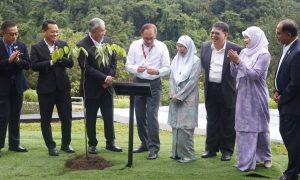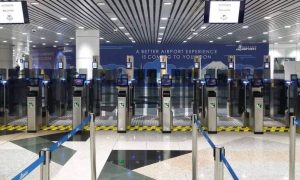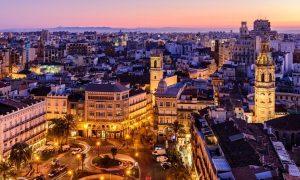
Dynamic, energetic, and truly Malaysian, Kuala Lumpur is the core of Malaysia and the perfect blend of the old and the new. As a key travel hub in Southeast Asia, this city is a fun base for a medical holiday. Its name means “muddy confluence” and was so named as the point where two rivers meet lies in the city’s point of origin.
A culturally rich city with a dynamic palette of activities to offer the visitor, Kuala Lumpur offers a taste of Asia in its own unique style. If you only have a couple of days to spend in the city, here’s an abbreviated list of what to do to ensure you get a good sampling of the Malaysian capital.
View from the top
For years, one of the best places for a bird’s eye view of the city was from the world’s highest two-storey bridge at the 41st and 42nd floors of the Petronas Towers, the dazzling twin 88-storey buildings which dominate KL’s skyline. However, tickets must be purchased, the Skybridge is closed on Mondays, and a lot of time can be wasted in pursuit of what is a ultimately a short 10-minute visit to the Skybridge.
An alternative is at Menara Kuala Lumpur, an observation tower 276 metres above ground level in the forested enclave of Bukit Nanas. These days, however, rooftop bars and sky-high venues abound in the city, and we’d recommend choosing this as an option – and have a relaxing drink with your view, instead!
Use the KLCC LRT station for the Petronas Towers, and the Bukit Nanas monorail station or Dang Wangi LRT station for Menara KL.
Delicious KL
Malaysia is known for its cuisine and just a short walk away from the popular Pavilion KL and Bukit Bintang area is Jalan Alor, a short road that’s packed with some of the best street food in the city.
Choose from barbecued meat, steamboat – think of it as Malaysian fondue, or traditional dim sum in baskets for the perfect meal stop, day or night. Use the Bukit Bintang monorail station, then it’s a very short stroll to Jalan Alor.
Not far beyond Jalan Alor is Changkat Bukit Bintang, an immensely popular area for resident expats and visitors, especially at night. Trendy bars and restaurants compete for your business and the entire street comes alive in the evenings and the party goes on until the wee hours.
Tranquility in the city
After a quick refreshment break, it’s time to lose yourself in some tranquility. Perdana Lake lies to the west of the city within over 170 acres of a lovely park known as Perdana Botanical Garden, where you will find guided walks, an orchid garden, a hibiscus park, a deer park, and much more.
Though the Malaysian capital of KL isn’t the only health holiday destination in the country, it remains the dominant player. For visitors who might be short on time, but still wish to see some of the attractions of their host city, travel writer Lisa Eldridge suggests a handful of sights and activities for the time-crunched medical tourist in Kuala Lumpur.
Bird Park, with its stunning collection of bird species from all over the world. If butterflies are more your thing, the lovely KL Butterfly Park will delight you with over 5,000 live specimens. You’ll need to take a taxi to reach the Garden, as no LRT stations are in the vicinity.
Religion as art
While enjoying the Perdana Botanical Garden, you’d be well-served to visit one of the most stunning pieces of architecture in the city: the nearby Islamic Arts Museum. With beautiful ceiling domes, this museum hosts an impressive collection of ceramics and textiles amongst exquisitely designed models of mosques from around the world.
From here it’s just a stone’s throw away from the National Mosque, also known as Masjid Negara, a striking building full of Islamic symbolism. Note that visitors should be conservatively dressed.
Sensational shopping
For a spot of Malaysian shopping in the city, head east across the Klang River to Central Market. Once a wet market in the late 19th century, it is now a centre for Malaysian arts, culture, and handicrafts and is an award-winning tourist attraction. Easily accessed via the Pasar Seni LRT station.
Oriental flair
Kuala Lumpur is a mix of Chinese, Indian and Malays and where better to experience the Chinese culture than in Chinatown, an area of the city, which rarely sleeps. Just a short stroll away from Central Market, Chinese culture oozes from the narrow streets, all culminating with the riotous colours, smells, and dynamism of Petaling Street.
This is also a good spot to meet other tourists, drawn to the hustle and bustle of this colourful area with its numerous stalls and cheap goods – be sure to haggle. Choose from some amazing Chinese food or Nyonya cuisine, a fusion of Chinese and Malay delights before entering the Sri Mahamariamman Temple, the richest and oldest Hindu temple in Kuala Lumpur which dates back to 1873.
Use the Pasar Seni LRT station or the Maharajela monorail station to get to Chinatown.
As dusk falls
You may prefer to just take in the city’s skyline after such a full day. Finding a great rooftop bar in the city is easy with so many to choose from. For a glamorous cocktail, the Sky Bar on the 33rd floor of the Traders Hotels has amazing view of the Petronas Towers or choose the Luna Bar at Pacific Regency Suites for a laidback vibe.
For a seriously close-up view of the Twin Towers, choose Nobu or Marini’s on 57, located on the 56th and 57th floors of Petronas Tower 3, respectively, and sip your cocktail from the loftiest perches in the city – dress code applies. Use the KLCC LRT station for most of these locations.
Night bazaars
As night falls upon the city, the shopping bazaars come alive allowing a respite from the day’s sightseeing. Petaling Street, the main market area of Chinatown, as well as the surrounding streets and alleys, all transforms into a lively night market with sellers and vendors hawking their goods.
A different alternative is the trendy Bukit Bintang district with a stunning crystal fountain marking the entrance to upmarket Pavilion KL, with over 500 stores. This is the premier shopping area in the city (along with the swanky Starhill Gallery across the street), but if you are feeling retailed out, a visit here to see the tallest Liuli crystal fountain in Malaysia makes the trip worthwhile.
You can use the Bukit Bintang monorail station, or the KLCC LRT station and take a series of elevated, air-conditioned walkways from the convention centre adjacent to KLCC all the way to Pavilion KL.
Alternative sights
If time permits, the Batu Caves are only eight miles outside of the city and are reached by train from KL Sentral or by taxi. These ancient natural caverns house an important Hindu temple which attracts thousands of worshippers to the limestone caves.
An alternative place to eat is Kampung Baru, an enclave that is the oldest residential neighbourhood in the city, with traditional wooden houses and authentic Malay food against the backdrop of the city skyline. Use the Kampung Baru LRT station. If you visit on a Saturday, head to Amcorp Mall for the weekly flea market where you can pick up an antique to take back home. Use the Taman Jaya LRT station.
Getting around
With a bit of planning, you can easily see many of the best sights within a day or two. If your condition permits, getting around the city is easy on foot as the city is quite compact – though on hot days (not uncommon in KL), this can be exhausting.
If you prefer, take the train and/or monorail that navigates its way around the city, and the series of elevated, air-conditioned walkways between KLCC and Bukit Bintang, built a couple of years ago, was a welcome addition to the city.
Taxis are always a viable option, and can best be summoned by useful smartphone apps such as MyTeksi and Grab.
This article was originally published in Health Holidays in Malaysia (2015).
"ExpatGo welcomes and encourages comments, input, and divergent opinions. However, we kindly request that you use suitable language in your comments, and refrain from any sort of personal attack, hate speech, or disparaging rhetoric. Comments not in line with this are subject to removal from the site. "


























